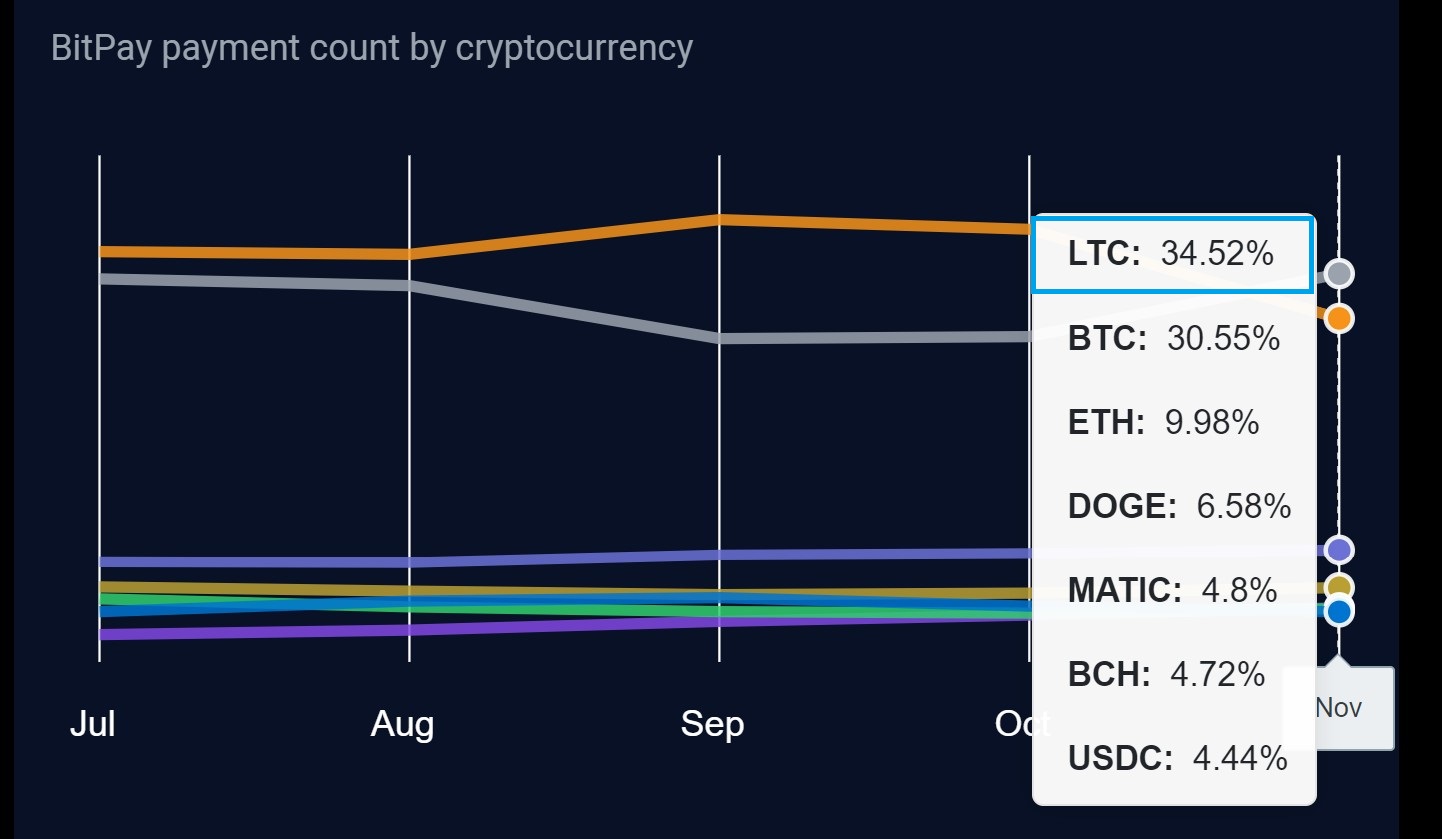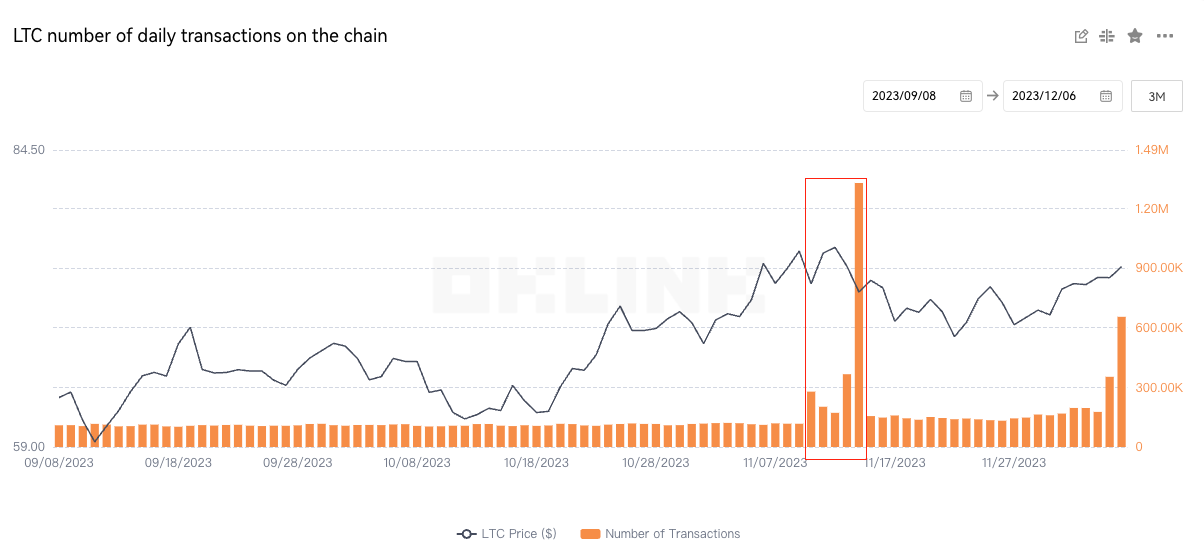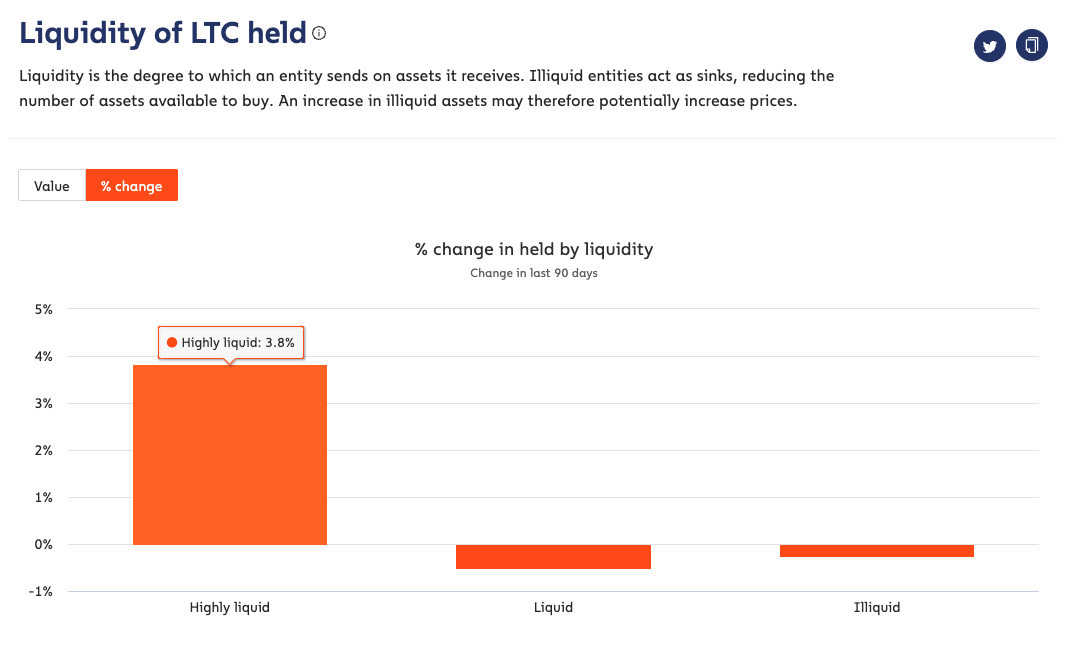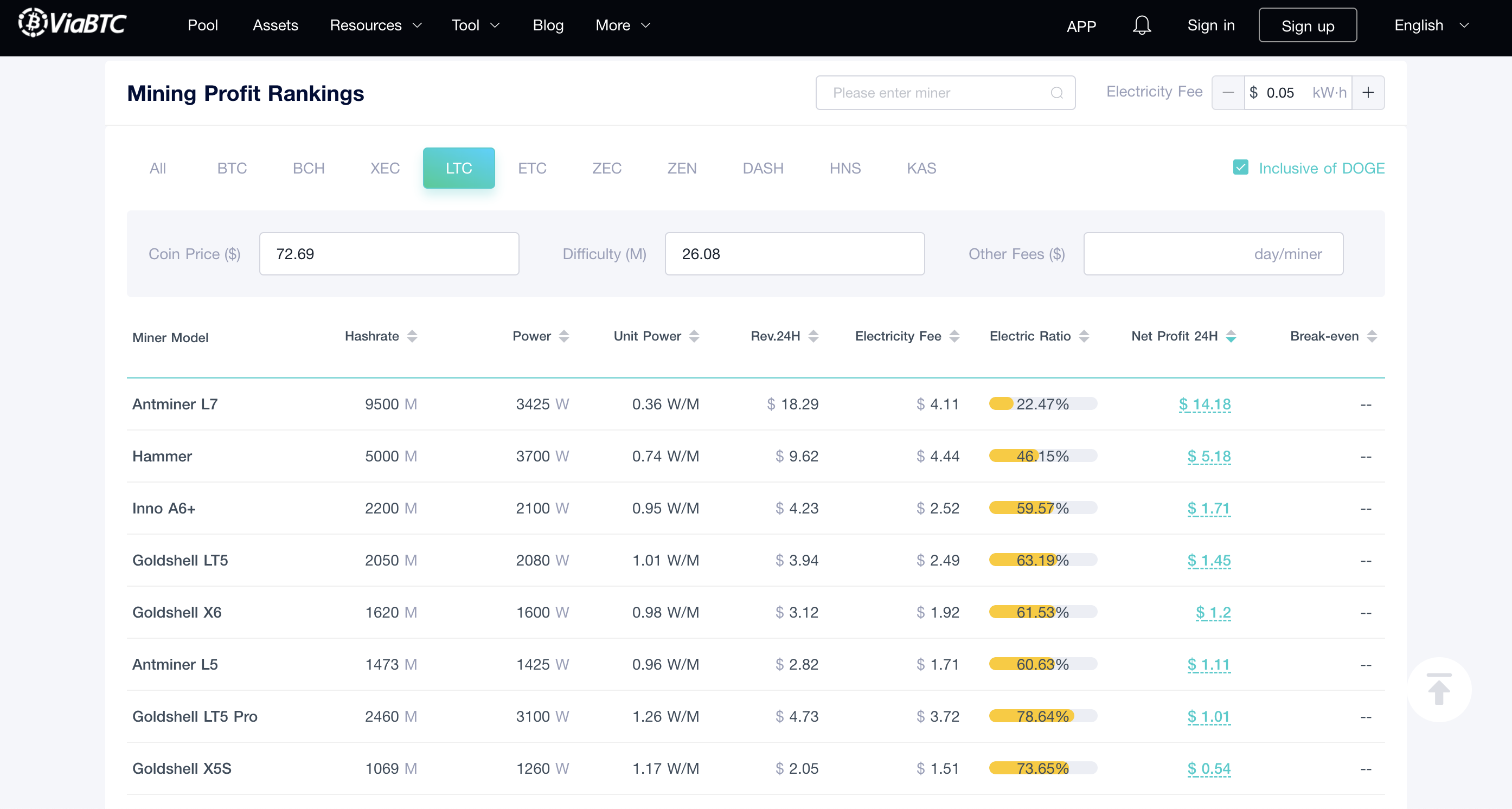Amidst its global recovery last month, the crypto space saw a month-over-month jump in its market cap in November. Notably, top projects like SOL and AVAX demonstrated robust performance, with monthly growth records exceeding 50%. Some projects are making quiet strides in other areas, despite unremarkable price performance. For instance, Litecoin, a long-established project with a 12-year history, overtook Bitcoin in payment count last month, becoming the most frequently used crypto for transactions.

Source: BitPay
For financial products, market prices can sometimes be a lagging indicator. Today, let’s examine Litecoin’s performance over the past month in terms of on-chain data, aside from prices.
Transaction Fees (Miner Fees)
The launch of the Ordinals protocol has sparked the emergence of more tokens and protocol standards. On May 2, 2023, the Litecoin community released LTC-20, a fork from BRC-20. The move has brought new dynamics to the LTC ecosystem, leading to an exponential growth in transaction volume. This, coupled with the market rebound in November, has reactivated the whole network.

Source: OKLINK
According to OKLink, Litecoin registered above-average daily transactions on five days in November. In particular, the network facilitated 1.32 million transactions on November 14, bringing miners 23.21 LTC in transaction fees. Overall, November saw approximately 5.74 million transactions on the Litecoin blockchain, generating around $25,800 in miner fees. Compared to the figures recorded in October, LTC’s transaction volume grew by 67.5%, while the miner fee jumped by 11.53%. Litecoin’s activity and growth momentum in November followed an expected trend.
Liquidity
In the crypto market, liquidity is a crucial concept. High liquidity implies a better trading experience and more flexible trading strategies. For investors, abundant liquidity allows for easy buying and selling of a crypto without swinging its price. Ample liquidity is, therefore, a sign of a healthy market.

Source: Chainalysis
Data from Chainalysis shows that, over the past 90 days, highly liquid LTC holdings have increased by 3.8%. This balance between buyers and sellers has contributed to a more stable market, making it more resistant to manipulation.
Whale Holdings
Crypto whales typically refer to individuals or entities holding a significant amount of crypto assets. With massive capital, they can have a huge impact on the market. As key market players, these whales often hold millions or even billions of coins. However, the excessive concentration of assets contradicts crypto’s ethos of decentralization.
The top 10 addresses control 14.13% of the total LTC supply, while the top 100 holders own 42.19% of LTC, according to the blockchain explorer. In comparison, Dogecoin, another mainstream crypto, is noticeably less decentralized: The top 10 addresses control 45.48% of the total DOGE supply, and the top 100 holders own 66.14% of DOGE.
Network Hashrate and Mining Difficulty
Since the smooth completion of the third LTC halving in early August this year, the LTC hashrate has been trending upward. Despite a reduction in market supply prompted by the halving, the demand for Litecoin has not seen a surge, preventing price growth. Meanwhile, the enthusiasm for mining LTC is waning, as the business is not as lucrative as before. Some mining rigs are being forcibly shut down due to a lack of profits. Furthermore, with its current price, LTC has failed to attract new miners. As a result, the LTC hashrate is stuck around 1 PH/s.

Note: According to ViaBTC’s Mining Profit Rankings, only a few top ASIC mining rigs promise daily profits exceeding $1.
The good news is that the multiple downward adjustments in mining difficulty have made LTC mining less competitive. The LTC mining difficulty now stands at 26.08M, which is expected to be reduced to 24.75M (-5.1%) in the next adjustment. This development promises to improve the profitability of LTC mining for active miners. For miners confident in LTC’s future potential, now is a good time to hoard more coins.
As we approach the end of 2023, optimism has prevailed in the crypto market, driven by a series of favorable events: the Fed has postponed interest rate hikes, the AI narrative continues to boom, and the BTC price has returned to $40,000 after 18 months. However, positive news about Litecoin seems scarce. In this final month, can Litecoin break free from the shadows and regain its prominence? Let’s wait and see.
*Disclaimer: The article is for reference only and offers no financial advice.